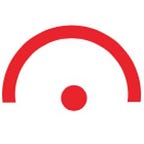Application of iterative mapping workflow to the croplands in Uzbekistan
Uzbekistan 🇺🇿 is a country in Central Asia. It has the leading Agriculture industry which contributes more than 28% to national GDP. Export of agricultural products contributes around 10% to external earning an continues to grow.
Looking at it from above (by this we mean satellite images) we tried the iterative mapping workflow, “Agro Mapflow AI”, to be applied to the extraction of agricultural field boundaries. This data is crucial for crop management, analytics, and yield forecasting.
We’ve already noticed that the average size of agri fields is getting smaller towards South. Agri fields of Uzbekistan are somewhat in the middle of Russia and India in size.
Currently, we have two models for agricultural parcels segmentation: one is pretrained for medium-res Sentinel 2 imagery and the second is — for high-res imagery. It is important to use the right tool for the job and in this demo we compare those two models.
NB! The easiest way is to run this model in QGIS — to this purpose use the plugin “Mapflow”
The medium-res model was applied to Sentinel-2 image which has the best of 10m / px resolution and contains 10 bands of multispectral. The hi-res model was applied to Maxar image of 0.5 m/px, RGB. As soon as both models are applied to a single image we see the significant advantage of the hi-res one. The Sentinel based model is missing a lot of field features and performs considerably low in terms of “sensitivity” (“recall”).
Note! Both models haven’t been tuned for Uzbekistan — it’s just the experiment for the yet another country.
The lifehack of the iterative mapping workflow
If applied correctly — the “iterative mapping workflow” can make some magic. (Read more about it here❗️This workflow could be picked up in hours by any cartographer and we are already developing a series of tutorials explaining how it works).
Using the series of the Sentinel imagery and contributing a fraction of mapping work to join the field features, in 5 images and 10 min of making edits, we can fill most of the gaps in the mask and drastically improve the map. However the rest should be mapped manually.
In short — the hi-res model can be found more appropriate for the base map of croplands in Uzbekistan. However to monitor changes we need also the low-res one as a most cost-effective way to keep our agricultural map up to date.
Related articles:
- AI-assisted mapping of crop fields using free Sentinel imagery
- Extraction of agricultural fields boundaries using Hi-Res Satellite imagery
References
- Mapflow.ai — AI-mapping platform
- Agro Mapflow — Get token and start mapping
- Geoalert.io — Contact us
